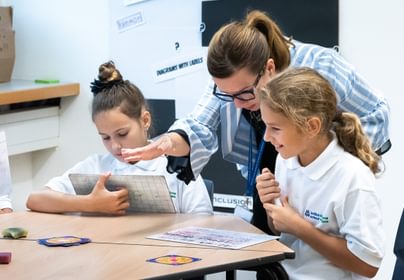Julia and Kevin from Year 10 bring you an interesting read about the importance of staying active.
Throughout the period of isolation, our eyes are constantly glued to our vivid screens, our back is bent forward over our desks as we sit in the exact same position for hours straight trying our best to stay focused during our lessons on Zoom.
When school is over it’s time to get homework done, and by the time homework is done, darkness creeps upon the landscape and the sun’s light diminishes, leaving frigid and dark surroundings. Who would want to go outside in these conditions? Instead, most of us would decide to linger in our warm and cosy house, maybe scroll through our phone, watch some Netflix, or even take a short nap.
Although this description of a relaxing evening may sound like a dream, it is definitely not the perfect lifestyle. This brought us to a question, how physically active are we? And how physically active should we be?
In an effort to determine how physically active we are as a school, and whether or not most students reach their weekly requirements of exercise, we prepared and sent out a survey to students from KS3, KS4, and KS5 and the results were positively shocking.
After predicting that most students would fail to exceed or reach the target amount of exercise per category due to the current circumstances with remote learning and isolation, we were surprised and glad to see that most students in fact exceeded the recommended amount of physical activity.
Overall, a child between the ages of 6-17 requires the following amounts of physical activity:
AEROBIC EXERCISE:
Recommended: 1 hour per day, 3 times a week.
The purpose of aerobic exercise is to increase your heart rate and breathing rate which will improve your endurance. For example:
- Jogging/running
- Cycling
- Hiking
- Swimming... etc.
Here is a chart depicting how many students from Secondary reach or go above the recommended weekly amount of aerobic exercise and how many do not. The results are positive, as there are almost three times as many students who do an average and an above-average amount of aerobic activity compared to those who do not reach their requirements.
MUSCLE STRENGTHENING EXERCISE:
Recommended: Around 20 minutes per week.
Usually, aerobic activity also includes exercises that strengthen your muscles and bones, therefore, muscle strengthening exercises should be included in your aerobic exercise and must be performed at least 2-3 times a week. Some examples are:
- Lifting light weights
- Push-ups
- Exercise aimed to strengthen certain muscles
Once again, the survey results proved that more students receive an average to an above-average amount of muscle-strengthening exercise a week. However, more than ⅓ of the students underperform and do less than the recommended amount per week.
BONE STRENGTHENING EXERCISE:
Recommended: Around 20 minutes per week.
Similar to muscle-strengthening exercises, bone-strengthening exercises, which include any activity that produces a force or pressure on the bones, are part of the weekly aerobic exercise. Here are some examples:
- Running
- Jump rope
- Tennis
- Basketball
- Volleyball
The survey results regarding bone-strengthening exercise reflect the results from the aerobic exercise chart, with a significantly higher amount of students who do an average or above-average amount of exercise than below average.
Although the results show that most of our peers at BISL are staying active during quarantine, there are still students that do not reach their recommended amount of weekly exercise. It is important for everyone to stay physically active despite the current circumstances. Just like your homework is important for school, exercising is essential for both your physical and mental health. Force yourself to take at least a 30-minute break from your screen, and go through a short workout. You will feel as if you have accomplished something, done something good for yourself, and will be able to focus much better than you would have before. Remember:
Mens sana in corpore sano.”A healthy mind in a healthy body.By Julia and Kevin, Year 10



